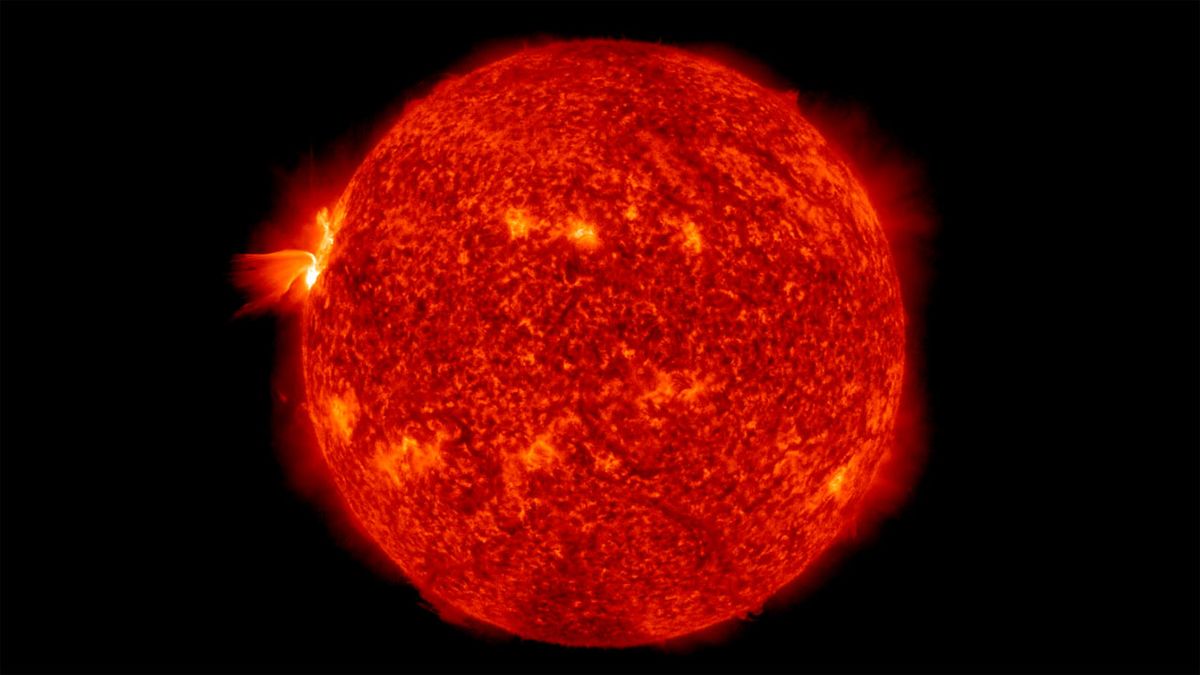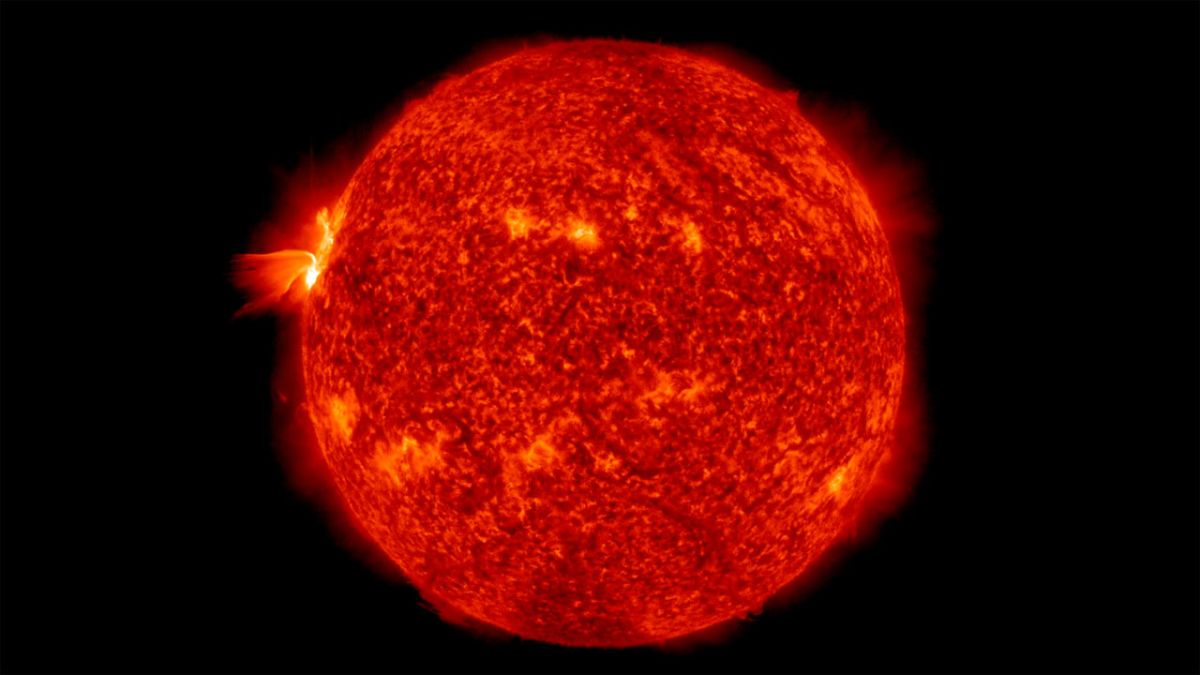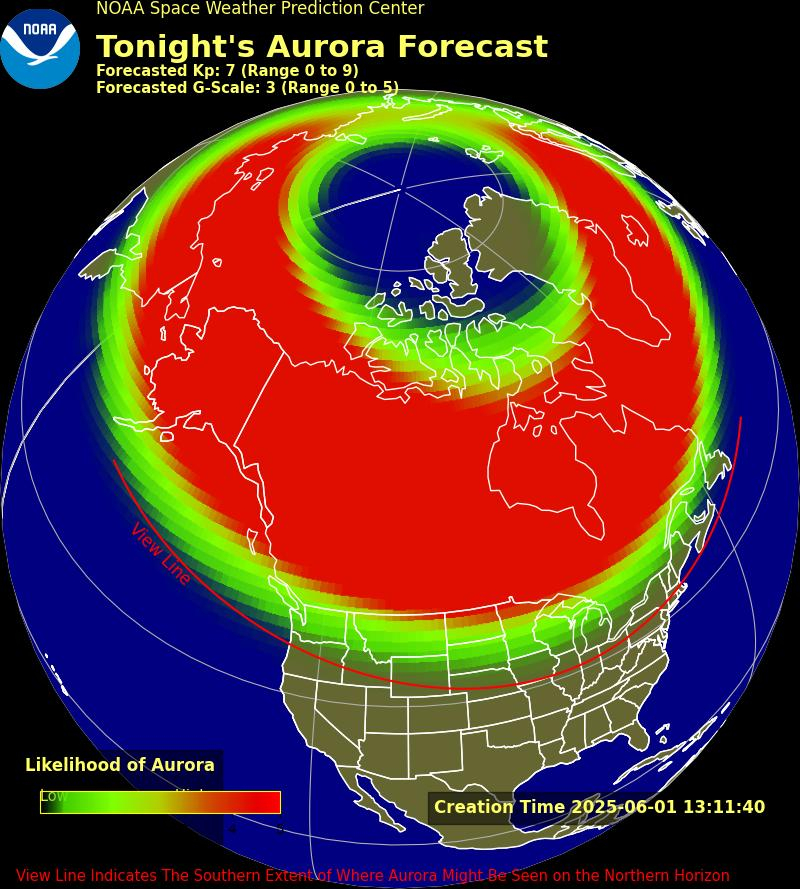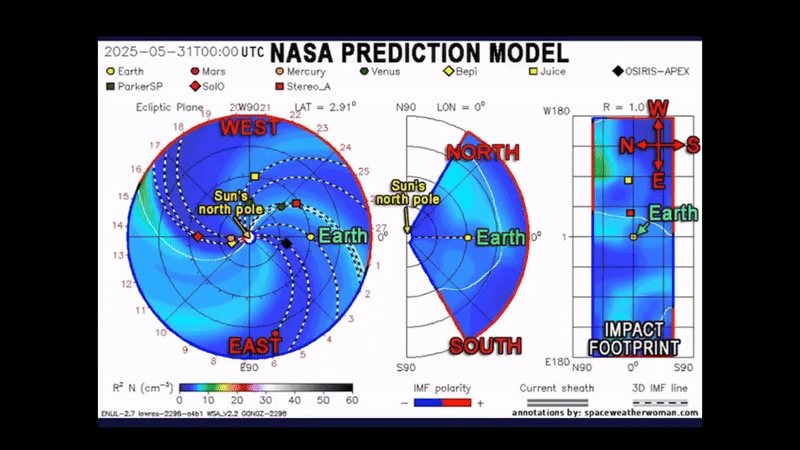
Scientists may have found a way to investigate the curious processes that accelerate solar particles to tremendous speeds.
Solar flares and coronal mass ejections (CMEs) — huge eruptions of superheated plasma — are two of the most energetic processes seen in the solar system.
Earth’s magnetic field protects us from the most extreme consequences of these solar storms, but powerful flares and CMEs can still disrupt our lives. For example, Earth-directed CMEs can spawn geomagnetic storms that disrupt power grids and communication networks. (It’s not all bad, however; such outbursts also supercharge the northern lights.)
Related: Wild solar weather is causing satellites to plummet from orbit. It’s only going to get worse.
As a result, scientists are keen to better understand these so-called solar energetic particle (SEP) events. But investigating the underlying particle acceleration process involved in SEP events is tricky.
New research demonstrates for the first time that energetic neutral atoms (ENAs) — particles with no electric charge moving at incredible speeds — could be used to probe the acceleration process in large SEP events like CMEs and solar flares.
The new findings are quite relevant, as they were released during a stretch of high solar activity. Earth has been pummeled by powerful solar flares and violent CMEs recently. For example, a rare backward sunspot called AR3296 erupted on May 7, sending a solar flare and a CME toward our planet.
The solar flare, consisting of electromagnetic radiation, hit first, ionizing the top of Earth’s atmosphere, and producing a radio blackout over the western U.S. and the Pacific Ocean. CMEs consist of plasma and therefore move more slowly, at speeds of a few million miles per hour. So the CME from the May 7 event arrived a few days later.
ENA particles could also be used to tell the difference between two different sites of solar particle acceleration, according to the new study, which was led by Gang Li, a professor of space science at the University of Alabama in Huntsville. These sites are the tremendous loops of plasma that emerge from sunspots and result in solar flares and areas that are downstream of CME-driven shocks.
“The ultimate goal of using ENAs is to obtain various physics parameters at the acceleration sites,” Li said in a statement. “Scientists know that particles can be accelerated at two possible locations: either solar flares or CME-driven shock. However, which site is more efficient in accelerating particles? Which site can accelerate particles to higher energies? These are often debated questions, and we do not know the answer.”
Related stories:
Answering these questions by simply observing the sun has been tough, as it is difficult to take direct measurements from around these acceleration sites. Because ENAs are neutral particles, usually hydrogen atoms, they are not affected by magnetic fields. This characteristic makes them useful for studying these sites remotely, team members said.
“These neutral particles are not affected by the solar wind MHD [magnetohydrodynamic] turbulence as they propagate from the sun to observers,” Li said. “In comparison, protons, ions, and electrons, because they are charged, their propagation from the sun to the Earth is distorted by the solar wind magnetic field.”
This means that ENAs carry all the physical information of the acceleration site without distortion from magnetic fields, Li added. So, a dedicated ENA detector around Earth could potentially unlock their secrets, even though it would be 93 million miles (150 million kilometers) from the particles’ acceleration site.
NASA is currently planning such an instrument as part of its Interstellar Mapping and Acceleration Probe (IMAP) mission, which will be capable of measuring ENAs originating from the sun.
“Our simulation forms a theoretical basis for interpreting future ENA observations,” Li added. “A dedicated ENA mission that filters out the more numerous charged SEPs and goes directly after these ENA measurements can provide new information about SEP acceleration near the sun and help solve long-standing questions that have baffled the community.”
The team’s research was published in February in The Astrophysical Journal.



